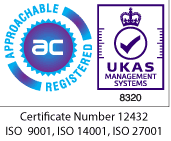The Role of KPIs in a Post-Pandemic Landscape
The difference between metrics and KPIs

The first lesson of KPIs: the map is not the territory
No matter how good your data is, it is always a slice of reality. Sometimes managers get too fixed on data, on shortfalls, on targets. Why was productivity lower this month? Rather than looking for wider issues and trends, they might just wave a finger. In her Ted Talk on the downfall of Nokia (www.ted.com/talks/tricia_wang_the_human_insights_missing_from_big_data?language=en), Tricia Wang, an ethnographer, noted how big data failed the former mobile phone giant. Nokia relied heavily on quantifiable data about the here-and-now, and the company failed to see the sweeping changes on the horizon: the smartphone in your pocket.
This article, among other things, sets the human factor alongside digital. One must not supplant the other.
Get the basics right: if you are a senior leader or manager setting KPIs, make sure your company adopts these rules
- Make sure your KPIs are realistic. If your KPIs are unrealistic you risk putting huge pressure on teams who will potentially manipulate the metrics or take damaging shortcuts as the only means of success.
- Always attach context and human insight to your KPIs.
- Choose a handful of focussed KPIs. Too many KPIs leads to confused messaging and an inability to separate wheat from chaff. It is overwhelming for both management and staff.
- Make sure KPIs at every level feed into the overall strategic vision.
- Share information about high-level goals, what the current levels of performance look like, how should it be and why, and how the future looks. Make sure employees feel connected to your high-level KPIs.
- Include employees in setting departmental KPIs.
- Ask employees to set their own KPIs.
- Too often KPIs fail because they can’t be measured with a meaningful or unbiased method. Make sure your KPIs have a quantifiable outcome. The exceptions to this rule are Value-driven KPIs and CPIs (see below).
- If you have the resources to do so, include Value-driven KPIs and CPIs (see below).
- Don’t focus on the system over the people. This is a golden rule and something we talk about a lot at Cambridge Management Consulting.
Be careful: KPIs can make things worse
Unfortunately, it’s still commonplace to find KPIs that track tasks completed per X (where X is a period of time, usually a day, week or month), with little distinction made between complex and straightforward tasks. While averages taken over a longer period can be useful, this is a simplistic and demotivating way to compare employees and usually ends in corner-cutting or manipulation of stats. Senior management should be careful pressing for data on cost-to-serve (i.e. how much does it cost on average to serve a client) if, for example, the tasks being measured vary considerably in duration depending on complexity.
Another common fault in the design of KPIs is creating data just for the sake of it. There is occasionally an obsession with producing data sets without asking whether these metrics are actually useful and add value. As we noted earlier, what distinguishes KPIs from other metrics is their alignment with and contribution to the strategic goals of the company.
Setting individual KPIs at annual reviews—when this is done wrong—can be extremely demotivating. Some leaders think they have skirted this problem by asking employees to set their own targets, but this can be either a positive or negative experience depending on a variety of factors. There is a tendency to do these things off a checklist and fulfil the pantomime of ‘set and forget’. In times of Covid-19, with workplaces changing rapidly, it might be necessary to review KPIs more frequently. With remote-working now the norm, KPI appraisals over video-chat should be delayed if there are more pressing problems in your team.
To make KPIs successful, you need to build a positive culture within your team first and foremost. Make sure your team are engaged and motivated and have the digital tools necessary to perform well in a remote environment. Once you have this foundation, you can set team KPIs, making sure they are realistic and can be measured without bias. It is too easy for managers to hide behind a KPI dashboard, managing stats and not people.
Include your team in setting these goals and demonstrate how they fit into the overall strategic vision; also agree how they should be measured. Then set KPIs per role, also with contributions from employees. Whether you should set KPIs per role or per individual depends on your business, how your team functions best and your leadership style. If setting KPIs per individual, be careful that you do not seem to be punishing someone unjustly or forcing individuals to compete against one another.
At both team and role level, consider setting Value-driven KPIs (see below). This could also be summarised as ‘don’t lose sight of quality’ since quality is generally underrepresented in metrics. The immediate rebuff is to say quality is hard to measure, which it is (and this was one of our KPI rules: stick to what you can measure), but if you have the resources to do so, produce KPIs for quality and values using ethnographic methods and digital tools.
KPIs and remote-working
We’ve recently seen businesses struggle with communicating a message of relaxing productivity—while their employees juggle work and home schooling—while also doubling down on departments that are underperforming. There are conflicting views about whether remote working in good or bad for productivity. JP Morgan Chase made the news when the CEO Jamie Dillion stated in late 2020 that no ‘creative combustion’ was occurring in video meetings. He voiced his intention to get employees back to offices as soon as possible. Yet, when surveyed, employees regularly report their productivity as equal or higher while they are remote working.
Despite the lack of good data on productivity levels, the function of KPIs doesn’t necessarily change in a remote environment. However, if your team is struggling, or if certain members of your team are underperforming—perhaps with other team members being forced to take up the slack—, it might be worth changing to a more value-based KPI system for the time being. Switching to broader targets across the team might allow you to concentrate efforts on morale or the introduction of digital tools without going into the ‘red’ on your KPIs.
The benefits of including Value-driven KPIs in your metrics
To avoid some of the pitfalls of using performance indicators for your team, make your targets value-driven—connect them to value behaviours or make some of your higher-level goals value-based. This should connect up with company-wide Values and commitments to devote time/energy/money to social causes. In the third sector these kinds of Value-driven KPIs are being discussed in white papers and touted as the future of performance management. However, the idea is also making its way into the private sector and it can be recontextualised in a number of ways.
Leaving aside the high-level Value-driven KPIs for now, what does a Value-driven KPI look like at an individual or team level? The emphasis is on soft skills: creating positive behaviours such as teamwork, creativity, going the extra mile for customers/clients and so forth.
One of the smaller transitions might be changing from a score-based appraisal system to a list of competencies—ironically, it is often the case that organisations switch from a list of competencies to a score-based system to gather better data across the business!
The obvious advantage of using Value-driven KPIs is that they will more closely mirror the real-life values that employees are motivated by and which they hold about their jobs and lives. The downside is cost and time. Companies that wish to make these performance indicators measurable (and, of course, they must be measurable to function as metrics) must invest in ethnographic tools and methods, and train their management team accordingly. This can be an expensive and time-consuming.
It is interesting to note how this paradigm shift has already started. Automated surveys, using a Likert scale, are regularly sent out by companies and they are an attempt to obtain the sort of qualitative data that tells a business how it is performing against its own set of values (it should also be noted that sometimes this data has a different agenda).
Value-driven KPIs are part of a much greater cultural shift occurring across the business landscape, one in which values are central to strategic vision. It also relates to the Jeff Bezos mantra of designing everything you do around customer expectations—which leads us to Customer Performance Indicators (CPIs), as discussed below.
Coaching and KPIs
There is huge value in coaching for leaders when it comes to the introduction and management of KPIs, and targets in general. As we have already shown, the way in which targets are discussed and the whole culture around them is key to their success. The human factor weighs in heavily. Some managers have the communication skills necessary and can build motivated teams around a healthy adoption of metrics. For others, they may feel weighed down by data and how to implement it without creating the familiar disconnect between management and team (the cold, calculating spreadsheet vs. the emotional human). When you think of what you value about your job, how many of those things are represented in your metrics?
For leaders struggling with the complex soft skills to navigate human and digital, coaching can revitalise the relationship dynamic between you and your team. Take a look at Cambridge Management Consulting’s Leadership services to find out how we can help with this central tenet of performance management.
A new metric: Customer Performance Indicators (CPIs)
As a disclaimer, we should first mention that businesses should think extremely carefully before introducing more KPIs. You may already have Critical Success Factors (CSFs) and Key Risk Indicators among many other metrics. However, our article ends with a necessary and timely discussion of Customer Performance Indicators (CPIs). These relatively new performance metrics place the customer experience at the heart of your success as a business: your client or customer is the measure of your successful outcomes.
Think about it this way. High-level KPIs such as tracking revenue measure your customers in terms of what they produce for your company. CPIs turn this around and measure the business in terms of what it produces for customers/clients.
The first stage is to find out what your customers/clients value most when they buy your product or use your service. This requires ethnographic tools combined with surveys and questionnaires or focus groups to gather and analyse qualitative data. The most effective method is contextual inquiry, an ethnographic research method where specially trained researchers speak with and observe customers as they think about or try to achieve specific outcomes.
Once complete, these ethnographic methods reveal a mixture of Value-driven and quantifiable metrics (which can be captured by your KPIs). A Value-driven CPI might relate to how a customer views reputation or environmental impact before making a purchase, whereas a more straight-forward, quantifiable CPI might simply be the time it takes for you to reply to an enquiry or how long it takes to deliver a product. Once again, we can see how Amazon has totally dominated the retail market by concentrating on CPIs and ensuring all of their KPIs deliver on those targets.
Once you have identified your CPIs, you can link them up with your strategic goals, and then to your internal KPIs and Value-driven KPIs. CPIs are sometimes recommended as the best measure of growth, because your customers/clients are the biggest levers when it comes to generating revenue.
If you are thinking about implementing CPIs, it is a complex undertaking which requires significant planning and resources and external expertise. But it almost certainly is worth the effort for medium to large businesses who want to scale while shifting their focus to core values and a customer-centric outlook.
“We’ve had three big ideas at Amazon that we’ve stuck with for 18 years, and they’re the reason we’re successful: Put the customer first. Invent. And be patient.”
Subscribe to our Newsletter
Blog Subscribe
SHARE CONTENT











